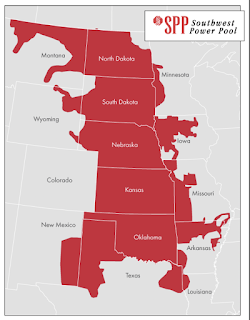This report from Wyoming on its near blackout during the recent cold wave and winter storm.
Lee Boughey, a spokesperson for Tri-State Electric Generation and Transmission Association, said the nonprofit, which provides power to eight electric cooperatives across Wyoming, planned for the impacts of the storm as it approached.
They anticipated higher demand from member utilities in Colorado, Nebraska and Wyoming, and Tri-State prepared for wind energy resources to decline.
For safety, during extremely high winds, wind turbines will stop running and feather their blades. Icing also can cause turbines to stop running.
According to energy mix data from the Southwest Power Pool, as the storm began to move through Wyoming on Dec. 23, at 3 p.m., wind energy resources began to drop. Within 24 hours, wind energy resources were about 25% what they were prior to the storm.
They didn’t begin to rise again until Christmas morning.
To compensate for the decline in wind energy, Tri-State turned to its fossil fuel and hydroelectric resources to keep the lights on.
That's right: wind-generated electricity dropped by 75% when it was needed the most. It was reliable fossil fuels that allowed the lights and heat to stay on.
Kansas Reports In
Kansas is the #2 state for wind power (Texas is #1). Via a column in the Wichita Eagle from James Zakoura, attorney for Kansans for Lower Electric Rates, Inc., we learned:
On December 22, the Southwest Power Pool had the highest winter day electricity demand in its history. It beat the previous record by 8%.
"To meet the demand of of 47, 127 megawatts,
- About 17,000 was provided by wind energy,
- About 28,000 were provided by coal and natural gas, and,
- About 2,000 were provided by nuclear." [there are few nuclear plants in the region]
As I've written in several posts (scroll down), the wind calmed on the 24th and 25th. Mr Zakoura went on to write that demand dropped (due to warmer conditions) to 34,482 megawatts, of which,
- Nuclear energy provided 2,000 megawatts,
- Coal and natural gas provided 27,585, and
- Wind energy provided just 3,061.
Put another way, wind energy -- when it was needed due to single digit temperatures -- dropped by 72%! This validates what I wrote at the time
here which included a map of Kansas weather stations that showed calm or nearly calm winds across the area.
We were able to keep the lights on over Christmas weekend only because we had nuclear and fossil fuels.
My Conclusion
We can continue with magical thinking or we can get serious about the reliability of the electric grid. My recommendation: began an urgent program of installing standardized, proven nuclear power generation stations. They generate carbon-free electricity. As far as I'm concerned, if we never install another utility-grid wind turbine, that's fine.
I have been asked why I'm not as critical of solar as I am of wind. The reason is there could still be some technology breakthrough which allows solar to better perform than it does now. That is not the case with wind. It fails when the wind is too light, too strong and -- because it is quite complicated mechanically -- it fails too often because it just breaks. Wind energy has received tax subsidies since the Carter Administration -- really! -- and it still frequently fails. The tax subsidy should stop.
If we continue on our current course, the grid reliability problems that we have seen during the past week will only worsen and blackouts will increase.
Hat Tip: Troy Kimmel





Comments
Post a Comment